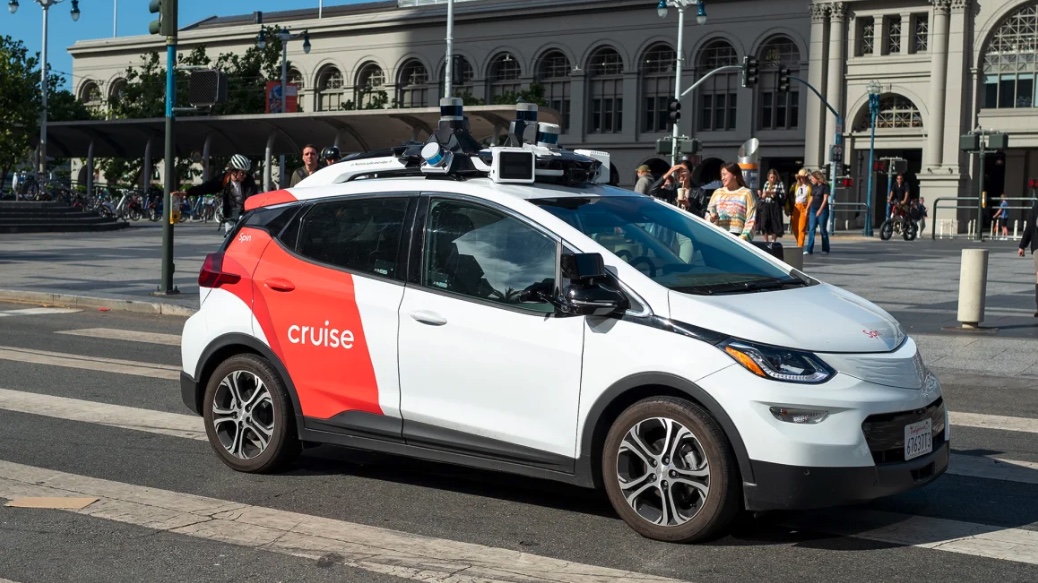บริษัท General Motors (GM) ประกาศยุติโครงการพัฒนารถแท็กซี่ไร้คนขับ โดยหันมาให้ความสำคัญกับฟีเจอร์ช่วยขับที่ยังต้องมีคนขับคอยควบคุมรถแทน ตามที่บริษัทแถลงเมื่อวันอังคาร
GM ตัดสินใจยกเลิกแผนพัฒนาแท็กซี่ไร้คนขับ เนื่องจาก “ระยะเวลาและทรัพยากรที่ต้องใช้ในการขยายธุรกิจ รวมถึงตลาดแท็กซี่ไร้คนขับที่มีการแข่งขันสูงขึ้นเรื่อย ๆ” ตามคำแถลงของบริษัท
โครงการแท็กซี่ไร้คนขับของ GM ดำเนินการโดยบริษัท Cruise ซึ่ง GM ถือหุ้นอยู่ 90% โดยพนักงานจำนวนมากที่ทำงานเกี่ยวกับเทคโนโลยีขับเคลื่อนอัตโนมัติจะถูกโอนย้ายไปทำงานในส่วนของฟีเจอร์ช่วยขับ เช่น Super Cruise ซึ่งเป็นระบบขับขี่แบบไม่ต้องจับพวงมาลัย แต่ยังต้องมีการมองถนน ที่มีในรถยนต์ GM มากกว่า 20 รุ่น การเปลี่ยนแปลงนี้จะช่วยลดต้นทุนได้ถึง 1 พันล้านดอลลาร์ต่อปีเมื่อการรวมระบบเสร็จสมบูรณ์
GM ระบุว่า การพัฒนาแท็กซี่ไร้คนขับจะต้องใช้เงินลงทุนมากกว่า 10 พันล้านดอลลาร์ และจะหันไปเน้นการพัฒนาฟีเจอร์ช่วยขับแทน
ตลาดแท็กซี่ไร้คนขับยังเผชิญกับการแข่งขันจากบริษัทอื่น ๆ เช่น Waymo ของ Google ที่ร่วมมือกับ Uber และ Tesla ที่มีแผนจะเปิดตัวรถยนต์ไร้คนขับที่ไม่มีพวงมาลัย เบรก หรือคันเร่ง รวมถึงบริการเช่ารถแท็กซี่ที่ผู้ใช้สามารถปล่อยเช่า Tesla ของตนได้เมื่อไม่ได้ใช้งาน
อย่างไรก็ตาม GM ตัดสินใจว่าไม่เหมาะสมที่จะเข้าร่วมแข่งขันในภาคส่วนนี้ โดย Mary Barra ซีอีโอของ GM กล่าวว่า การให้บริการแท็กซี่ไร้คนขับไม่ใช่ธุรกิจหลักของบริษัท และการย้ายความพยายามในเทคโนโลยีขับเคลื่อนอัตโนมัติไปยังฟีเจอร์ช่วยขับ จะช่วยเสริมผลิตภัณฑ์ที่บริษัทนำเสนอให้แก่ผู้ซื้อรถยนต์ได้
โครงการของ Cruise ยังเผชิญกับเสียงวิจารณ์ในช่วงไม่กี่ปีที่ผ่านมา หลังเกิดอุบัติเหตุในเดือนตุลาคม 2023 ที่รถแท็กซี่ไร้คนขับในซานฟรานซิสโกชนคนเดินถนนและลากผู้บาดเจ็บไปตามถนน 20 ฟุต ทางการแคลิฟอร์เนียได้สั่งให้บริษัทหยุดดำเนินการในรัฐ และ GM จึงระงับการให้บริการทั่วประเทศในเวลาต่อมา
เมื่อเดือนที่แล้ว Cruise ยอมจ่ายค่าปรับ 500,000 ดอลลาร์ เพื่อยุติข้อกล่าวหาทางอาญาที่อาจเกิดขึ้นจากการให้ข้อมูลเท็จต่อสำนักงานบริหารความปลอดภัยการจราจรบนทางหลวงแห่งชาติของสหรัฐฯ เกี่ยวกับอุบัติเหตุครั้งนั้น
อุบัติเหตุที่เกิดขึ้นในเดือนตุลาคม 2023 เกิดขึ้นหลังจากที่ผู้หญิงคนนั้นถูกชนโดยรถอีกคันที่มีคนขับก่อนหน้า GM และผู้สนับสนุนรถยนต์ไร้คนขับรายอื่น ๆ ยืนยันว่ารถยนต์ไร้คนขับสามารถปลอดภัยกว่ารถที่มีมนุษย์เป็นผู้ขับ โดย GM มีเป้าหมายที่จะผลิตรถยนต์ด้วยเทคโนโลยีไฟฟ้าและอัตโนมัติที่มี “อุบัติเหตุเป็นศูนย์ ปล่อยมลพิษเป็นศูนย์ และการจราจรติดขัดเป็นศูนย์”
แม้ว่าการยุติการสนับสนุนแท็กซี่ไร้คนขับอาจดูเหมือนถอยห่างจากเป้าหมายดังกล่าว แต่ Barra ยืนยันว่าไม่ได้เป็นการละทิ้งเทคโนโลยีอัตโนมัติทั้งหมด
“Cruise เป็นผู้บุกเบิกในเทคโนโลยีอัตโนมัติ” Barra กล่าวในแถลงการณ์ เธอระบุว่า การรวมความพยายามของ Cruise กับโครงการช่วยขับของ GM จะช่วยขับเคลื่อนวิสัยทัศน์ของบริษัทสำหรับอนาคตของการขนส่งได้
Dave Richardson รองประธานอาวุโสฝ่ายวิศวกรรมซอฟต์แวร์และบริการของ GM กล่าวว่า “เรามุ่งมั่นอย่างเต็มที่กับการขับขี่อัตโนมัติ และตื่นเต้นที่จะนำประโยชน์ของมันมาให้ลูกค้าของ GM เช่น ความปลอดภัยที่ดีขึ้น การจราจรที่ลื่นไหลขึ้น การเข้าถึงที่เพิ่มขึ้น และลดความเครียดของผู้ขับขี่”
GM is pulling the plug on its robotaxi efforts

General Motors is pulling the plug on its efforts to develop a fleet of driverless taxis and will focus on driver-assistance features that require a driver to be ready to take control of the car, the company said Tuesday.
GM is dropping robotaxi efforts “given the considerable time and resources that would be needed to scale the business, along with an increasingly competitive robotaxi market,” the company said in a statement.
The Detroit-based automaker’s robotaxi efforts had been run by a company called Cruise, of which GM owns 90%. Many of the Cruise employees who have worked on self-driving technology will be shifted over to GM to work on driver-assist features for privately owned cars, such as Super Cruise, a hands-off, eyes-on driving feature that’s now offered on more than 20 GM vehicles. GM said the move will cut costs by $1 billion annually after the combination is complete.
GM said it will instead focus on driver-assistance features rather than fully autonomous vehicles; developing a fleet of robotaxis would have required more than $10 billion, the company added.
GM faces competition in the robotaxi market from Google’s Waymo unit, in partnership with Uber, as well as from ride-hailing and taxi services that use human drivers. And earlier this fall, Tesla announced plans for new driverless vehicles without steering wheels, brakes or accelerators, as well as for a robotaxi service that would allow drivers to rent out their Teslas to the service when they aren’t using the cars.
But GM has decided it no longer makes sense to compete in that sector. CEO Mary Barra told investors Tuesday that the company decided the robotaxi service was not part of its core business, and that shifting its self-driving technology efforts to driver-assist features will help with the products it offers to car buyers.
Cruise also came under fire over the past few years after an October 2023 incident in which its self-driving taxis in San Francisco hit a pedestrian and dragged the woman along the road for 20 feet. California authorities ordered the company to halt its operations in the state as a result, and GM subsequently suspended the service nationwide.
Last month, Cruise agreed to pay a $500,000 fine as part of a deferred prosecution agreement that resolved potential federal criminal charges for providing a false record to the National Highway Traffic Safety Administration about that accident.
The October 2023 accident happened after the woman had already been hit by another car that had a human driver at the wheel. GM and other advocates of self-driving vehicles have insisted that self-driving cars can become safer than those driven by humans. GM has even set a goal for electrification and autonomous technology to produce cars with “zero crashes, zero emissions, and zero congestion.”
The decision to stop funding robotaxis is clearly a step back from that target, but it did not represent a total abandonment of fully autonomous vehicles, Barra said Tuesday.
“Cruise has been an early innovator in autonomy,” Barra said in her statement. She said combining Cruise’s efforts for self-driving vehicles with GM’s efforts to provide assistance to drivers “will help advance our vision for the future of transportation.”
“We’re fully committed to autonomous driving and excited to bring GM customers its benefits – things like enhanced safety, improved traffic flow, increased accessibility, and reduced driver stress,” said Dave Richardson, senior vice president of software and services engineering at GM.
By Chris Isidore, CNN

















